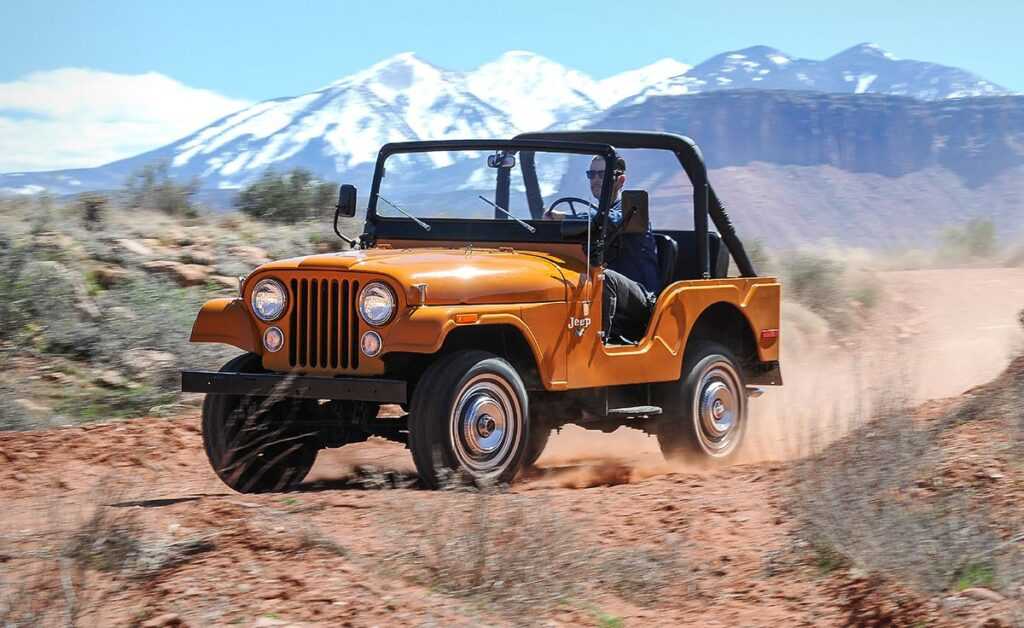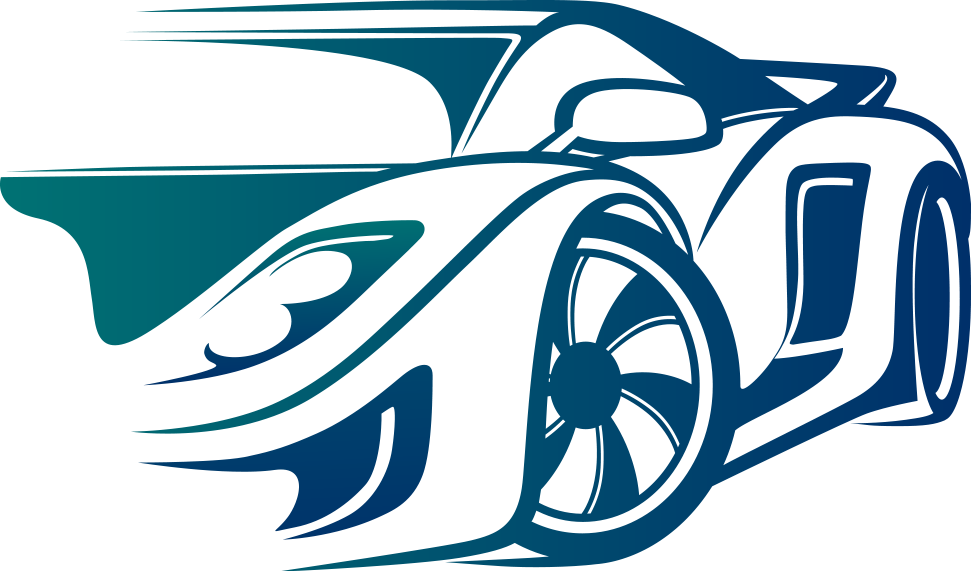What Suits Me?

Source: nydailynews.com
If you need to choose between Jeep CJ5 VS CJ7, we recommend going with CJ7. One of the reasons the Jeep CJ7 is still so highly regarded is because of its incredible durability and its ability to tackle any type of terrain.
This is a classic SUV, based on those used by the US Army during World War II, something that hints at the incredible indestructible capacity of the CJ7.
The main novelty of this model was in its dimensions since the wheelbase grew 10 inches (25.4 centimeters) to 237 centimeters.
Also, the chassis side members were separated at their rear section to allow the leaf springs and shock absorbers to be anchored closer to the wheels, which improved stability.
To this, we must add the fact that it has a not insignificant motorization range, with options for all tastes, in the same way, that it happened with its transmission.
Do not forget that the intention of Jeep with its CJ range was to take military vehicles to the streets.
Conclusion
After Jeep CJ5 Vs CJ7, we can say that the CJ series by Jeep has manufactured several different off-road vehicle models. Jeep CJ5 and Jeep CJ7 are some of the rare models that have changed the trends of the off-road car.
The Jeep CJ5 was produced first in 1954 and it was launched as a compact vehicle that was capable of maneuvering off-road.
Jeep Cj5 was produced in the year 1954. It was introduced as a compact vehicle capable of maneuvering outside the road. The CJ5 Jeep comes with a smaller wheelbase if we compare it with Jeep CJ7.
Jeep CJ7 was launched in 1976 and it was offered a different appearance compared to other Jeep CJ models.
This model was a quite better option for the CJ lovers in terms of great added features. However, it was costlier than other models.
Difference Between Jeep CJ5 and Jeep CJ7: Jeep CJ5 VS CJ7
When we talk about determining the difference between both models Jeep CJ5 and Jeep CJ7, there has been a lot of buzz on the internet. Some differences are more personal, like “better”.
These ideas are trying to address stability, strength, driving, and other applications.
Size
The CJ7 is larger than the Jeep CJ5. The shortened CJ5 even expanded at the same time, reaching approximately 2 inches of wheelbase. This increases the Jeep CJ5’s wheelbase measurements to 83 inches.
Automatic Transmission
The CJ5 has never been manufactured with an automatic transmission, but it has a chronic standard with a manual transmission. However, it is possible to find homemade models that automatically change the manual transmission.
It is still tough to find one of these on the market. If you need a gun, you will be more successful with the CJ7. In 1983, the CJ7 version was updated to include acceleration.
Therefore, you can easily find that there is a difference of up to 10 inches between the CJ5 and CJ7.
Frame
The slight addition of weight and the longer wheelbase kept the improved CJ7 on the road when cornering. It also gave the CJ7 the ability to accommodate an automatic transmission, the first in the CJ series.
AMC also redesigned the CJ7’s chassis which feature twin parallel cesarean lanes to stabilize the rear. The automaker also hardened the springs and mounted them, along with the shock absorbers, closer to the edge of the frame to improve handling.
Under-hood
CJ5 featured moderate power. Torque, not all horsepower output, is important to a vehicle Willys and Kaiser market as an off-road vehicle. Early thrusters include a four-cylinder hurricane engine with a modest 7.4-to-1 compression ratio.
In 1965, the CJ5 featured the 160-horsepower, 225-cubic-inch Dauntless V-6 engine with a torque of 235 pound-feet. The CJ5 begins to be V-8 in 1972, which displaced 304 cubic centimeters and generates 150 horsepower and 245 pound-feet of torque.
Buyers can also order the CJ5 with the 232-cubic-inch base on the six-cylinder line or 258 V-6. The 151 cubic inches inline 4-cylinder Iron Duke appeared in 1980 in response to the 1970s gasoline shortage.
CJ7 shared the same engines with the CJ5 except for the Dauntless V-6. The CJ7 was also available with a 145 cubic inch inline four-cylinder C240 Diesel Isuzu engine.
Wheel Size
In most cases, you can count on the difference in sizes, although there are always exceptions on the market. The CJ5 offers an 83-inch wheelbase, 139-inches long, and 69-inches wide.
The CJ 7 is typically 93 inches, 149 inches long, and 69 inches wide, and is well known on the market today.
Summary
- CJ7 is more general.
- CJ7 is easier to find on the market.
- CJ7 offers a manual and automatic transmission.
- The CJ7 has a larger travel area, as well as larger door frames, traffic jams, and other basic building features.
Jeep CJ5 VS CJ7 Historical Background

Source: motorauthority.com
Let us find out everything about these two super well-known models of Jeep. We will check out the short history of both of these models and will also see differences.
Jeep CJ5
In June 1940, shortly after the outbreak of World War II, a contest was launched in the United States to design a combat vehicle. Bantam Motor Company and Willys-Overland, which presents a quad, are the companies that come to the call and Ford joins.
Willys is the winner and the result is the final 1941 MB (although everyone knows it as Jeep), of which 650,000 units are manufactured during the contest.
After the conflict ended in 1946, Willys adapted the Jeep for civilian use and the first model was the CJ-2A (Civil Jeep 2A). Later Station Wagon AS appears and in 1948 the CJ-3A and Jeepster.
Willys-Overland is bought by Henry J. Kaiser and, under the name of Kaiser Willys Motors Inc., exclusively develops Jeep projects, a name that was registered as a brand in 1950.
The first result is the CJ-3B as well as, about the MB, this new model provides modifications to the bodywork. It remains in production for 15 years. But the real change comes in late 1954, with the legendary CJ-5.
Its greater wheelbase allows more interior space and features suspensions that provide greater comfort. It soon captures the attention of new fans of off-road activities and, even with important modifications, it resists until the 80s.
Kaiser Jeep Corporation is taken over by American Motors Corp., which already produces 660 cars a day at the end of the decade (in 1974, AMC manufactured 175 Jeep a day, giving an idea of the expansion of 4x4s).
The company enhances the CJ-5 and CJ-6 with stronger axles, more powerful brakes, and wider tires, and presents the Renegade, a limited edition of the CJ-5.
In 1973 comes the Quadra-Trac system, the first automatic permanent all-wheel drive device. A year later the Cherokee was born, one of the most successful SUVs in the world.
Although initially displaying an aesthetic similar to that of the Wagoneer, it soon takes on its own identity. The CJ-7 was introduced in 1976, with a plastic or canvas roof and steel doors.
The decade ends with the launch of the Wagoneer Limited: for the first time, the level of luxury of a 4×4 is comparable to that of a passenger car.
Jeep CJ7
The Jeep CJ7 arrives in 1976 to replace the latest versions of the CJ5 and CJ6. A classic cut SUV and robust appearance that follows the line of what the range had been offering.
It grows in size and offers greater interior habitability, also improving its stability.
One of the most important innovations in the Jeep CJ7 was the possibility of mounting a 5-speed manual gearbox and, for the first time, a 3-speed automatic. It had different engine options.
The CJ Family, Life After the War
CJs were a range of vehicles from the manufacturer Jeep that was in production from 1945 to 1986. They were characterized by being compact, open-body SUVs.
The acronym CJ refers to Civil Jeep and is that they began to be manufactured just after the Second World War, differing from the one used during the conflict, the Willys MB.
Among the entire CJ range, the CJ7 is probably the most successful and remembered, remaining on the market from 1976 to 1986 and with a total of 380,000 units manufactured.
The Jeep CJs went as far as the CJ10 nomenclature, although some of them had more versions available. After the CJ10, Jeep decided to replace its range with the Jeep Wrangler, in 1986.
Evolution of the Model
In chronological order, and only by way of example to frame the imminent article on the unit I have in the garage, the effective civil evolution of the protagonist of these lines was as follows.
CJ-2A (1945-1949), CJ-3A (49 -53), CJ-3B (53-present, distinguishable mainly because its hood is higher, to accommodate the new Hurricane engine: another 2.2 liters, although this time 75 HP).
Until what we could say that they are the classic ones, the genuine ones; that is, the models that first come to mind when we think of Jeep.
In 1954, the new CJ-5 is presented, in the image of the one used during the recently ended Korean War, which would be produced until 1983. Then came the CJ-7 (1976-86), with important structural and mechanical changes but with a very similar exterior appearance.
And both increasingly powerful thanks to 6 and 8 cylinder thrusters introduced by the brands that Willys were buying: Kaiser Motors, American Motor Company (AMC), and, finally, Chrysler.





























